At the heart of it, productivity is the measure of how efficiently you produce a specific output. The more productive you are, the fewer resources you consume to achieve your core objective.
Depending on the activity, those resources could be time, money, raw material, and even willpower. And lack of productivity is one of the main problems of modern life.
With the increasing volume of activities, decisions, distractions, and choices we face on a daily basis, being productive is becoming harder and harder. This guide will break down some best practices to be more productive in work and life, as well as specific principles to build a more productive working environment for your team.
The productivity problem explained
Our current society rewards hard work.
Unfortunately, our society also believes that productivity equals working more. That’s why we constantly see people doing extra hours at the office, pulling too many all-nighters, and risking their health for the sake of being a more “productive” person.
But, is this work habit efficient?
No.
And we have proof.
Recent studies suggest that the average worker spends nearly 50% of their workweek answering emails rather than doing actual work.
So, while these employees may be busy, they aren’t productive.
In fact, surveys reveal that a typical office worker is productive for just 3 hours per day.
Productivity is not about doing more, but about doing more of what matters more efficiently.Modern teams waste huge amounts of time on activities that don’t move the needle.
Let’s explore a few reasons for that.
1. Decision fatigue
The term “decision fatigue” refers to the psychological phenomenon which limits a person’s ability to make decisions. The more decisions you make in a given day, the less willpower and clarity you’ll have to make consequent decisions.
In other words…
If you want to make better decisions, you need to reduce the quantity of decisions you make every day.
The problem with this is that most employees are faced with a myriad of decisions every day that aren’t relevant to their job — sending emails, posting on social media, or attending meetings.
When these employees are finally faced with a truly important challenge or activity, they don’t have the energy to perform at their best.
This is the lowest-hanging fruit of work productivity.
By removing trivial decisions from your life, you’ll improve the quality of your decision-making, think more clearly, and work more efficiently.
2. Decentralized workspaces
Poor communication is a major productivity killer.
If your organization’s departments are siloed, your team will face many inconsistencies, and, thus, they won’t be able to work efficiently.
Besides, if your team relies on multiple sources of truth to perform their operations, you’ll waste tons of time collating information and making sense of it.
To remove this problem, find a system that helps you centralize all your communications into one place and integrates all your existing tools and apps to build a single source of truth for your entire organization.
For example, with monday.com, you can bring in your entire team to work on the same platform. We provide you with powerful collaboration features, so you can save time while improving your efficiency.
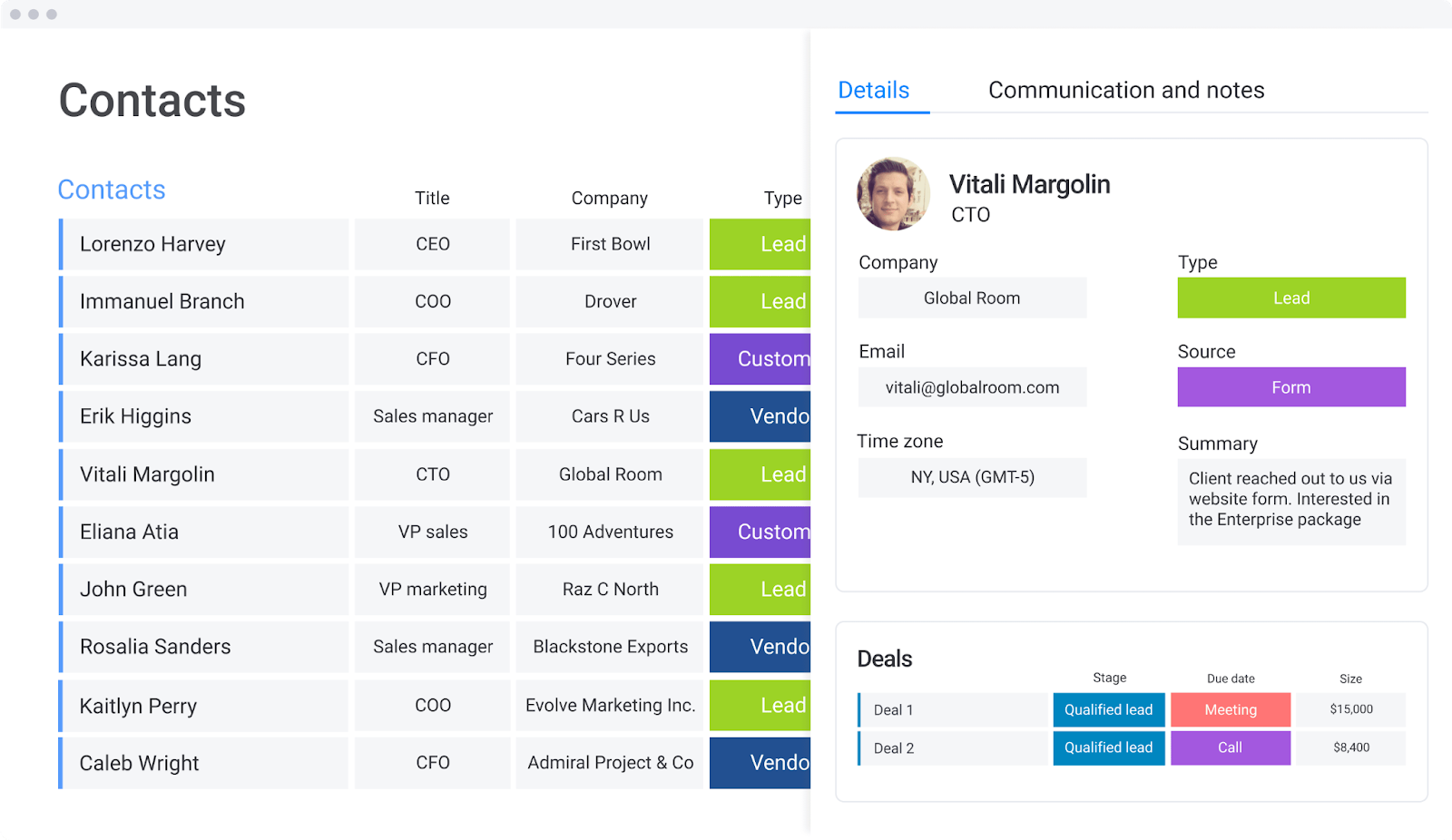
Also, you can integrate 40 of the most popular platforms in different industries, including Zoom, Mailchimp, Clearbit, Slack, Excel, Google Drive, among others.
Whether you’re a small team looking to work more efficiently or a large organization handling multiple projects, monday.com helps you centralize all your work under one roof.
3. Poor prioritization
The famous Pareto principle states that roughly 20% of causes produce 80% of outcomes, and vice versa.
In any organization, regardless of its industry, there are a few vital activities that produce results and many trivial ones that may or may not be essential to operate the business.
Many teams aren’t productive because they haven’t identified their most crucial activities. They can’t tell the difference between hosting a meeting and strengthening customer relationships.
For them, all activities matter equally.
But if you want to achieve maximum work productivity, you should:
- Perform a thorough analysis of your business.
- Identify the top 20% of activities that produce 80% of your results.
- Create a clear prioritization plan.
- Channel most of your energy level and resources into your “vital few” activities.
By following this simple 4-step plan, you’ll be able to make better, and smarter, decisions, as well as work more productively over the long run.
A basic prioritization matrix can be helpful at this stage.
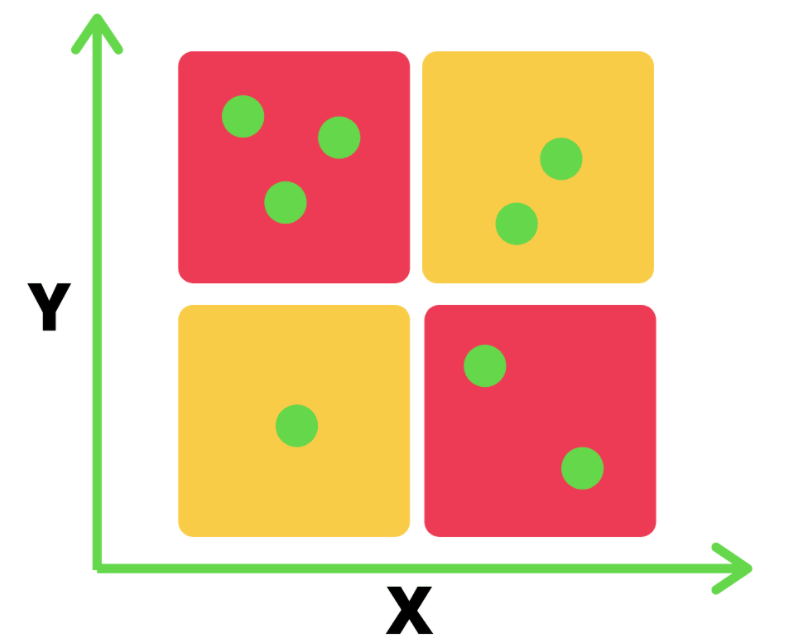
This type of matrix will help you and your team explore your current situation and prioritize activities accordingly.
To learn more about this process, we suggest you read our thorough guide called “Action priority matrix vs. Eisenhower matrix: which should you use and why?” It’ll help you start off on the right foot.
5 productivity tips for highly-successful people
Exploring the problem is essential to understand the solution.
So now that you understand the productivity problem, the question becomes: how can you actually be more productive?
Let’s discuss some of the best practices.
1. Become an essentialist.
Productivity comes down to doing less, but better — focusing on the important thing. It’s not about adding but subtracting.
In the book “Essentialism: The Disciplined Pursuit of Less,” Greg Mckeown states:
“Essentialism is not about how to get more things done; it’s about how to get the right things done. It doesn’t mean just doing less for the sake of less either. It is about making the wisest possible investment of your time and energy in order to operate at our highest point of contribution by doing only what is essential.”
We couldn’t say it better.
Productivity comes down to understanding what success means for you and then doing only what is essential to achieve that goal. Everything else is a waste of time and energy.
2. Take care of yourself.
We admit this concept may have been beaten to death, but you’d be surprised by the number of people who simply ignore it.
Colonial Life, a US-based insurance company, found that roughly 41% of employees say that stress negatively affects their productivity. And 83% of American workers suffer from work-induced stress.
Being stressed is so common it has become the new normal.
But, to get the most out of your working hours, you must take care of your health. Otherwise, you’ll never achieve your true potential.
Think about it:
If you pull an all-nighter, for example, the next day you’ll feel more tired, and you won’t be able to think as clearly as you’d like — you may even cause an accident. Also, continuous sleep deprivation will probably increase your levels of stress, making you less efficient.
A general rule of thumb is that the healthier you are, the more productive you’ll be.
Now, taking care of yourself comes down to building a daily routine around 4 things:
- Sleeping well
- Exercising
- Eating healthy
- Staying hydrated
By giving special attention to these 4 activities, you’ll improve your health, as well as achieve your peak productivity. For more tips on self care, check out our guide on the perfect morning routine.
3. Set boundaries.
As we stated a bit earlier, many people believe that productivity is all about doing more. Following this train of thought, many people take on more work than their actual capacity, hurting their ability to perform.
When their boss or a teammate asks them for a “favor,” they automatically say “yes,” without analyzing the situation.
But if you’re constantly helping others, when will you do your own job?
We’re not suggesting you should be selfish. But it is important to set boundaries and decide when you should say no.
4. Make time for play.
Some people believe that playing is for kids — a complete waste of time.
Others think playing is something you should do only in your free time.
And some others believe that play and work are opposites.
Recent studies suggest that gamification — the practice of systematizing play — increases overall productivity and happiness at work, 89% and 88%, respectively.
What does this mean for you?
By integrating play into your workflows, you’ll produce more and enjoy your work more.
Now, gamification is a complete discipline in itself, and it’s far outside the scope of this guide, but here are some ideas to start:
- Prizes and rewards: building a rewards program based on performance can keep your team motivated and productive.
- Contests: contests and giveaways can be great ways to incentivize hard work.
- Start with what you have: gamification doesn’t need to be fancy, start with what you have at hand to make work a bit funnier.
5. Multitasking isn’t the enemy, multi-focus is.
Traditional wisdom states that people can’t “multitask.” That is, doing multiple things at once.
But the truth is that you can.
Think about it:
You can watch TV while also checking your email, or you can listen to music while you exercise or drive home.
Humans can perform multiple tasks at the same time.
What you can’t do is to focus on multiple things at once.
You couldn’t give your undivided attention to someone while you’re solving a complex math problem, for example.
The key to increased productivity lies not in doing one thing at a time, but in removing any distraction and focusing on just one thing at a time — tackling each activity in the best way possible.
The essential elements to boost workplace productivity
In today’s day and age, no team can achieve its true potential without the help of software. But with so many options out there, choosing the right one for your organization can be tough.
So, instead of giving you a list of platforms to choose from, let’s cover the essential elements you should look for in any software.
Automations
What’s the fastest way to increase your productivity level?
Tapping into automations, of course.
By automating your most repetitive processes, you can focus on more crucial activities for your organization.
Recent research suggests that 30% of today’s work could be fully automated in 60% of all occupations.
If your team is doing all the work manually, you’re leaving a huge opportunity on the table.
Before you choose a specific digital workspace for your team, make sure it offers true workflow automation.
For example, with monday.com, you get access to more than 250,000 automation recipes to streamline everything from daily tasks to status changes and even notifications.
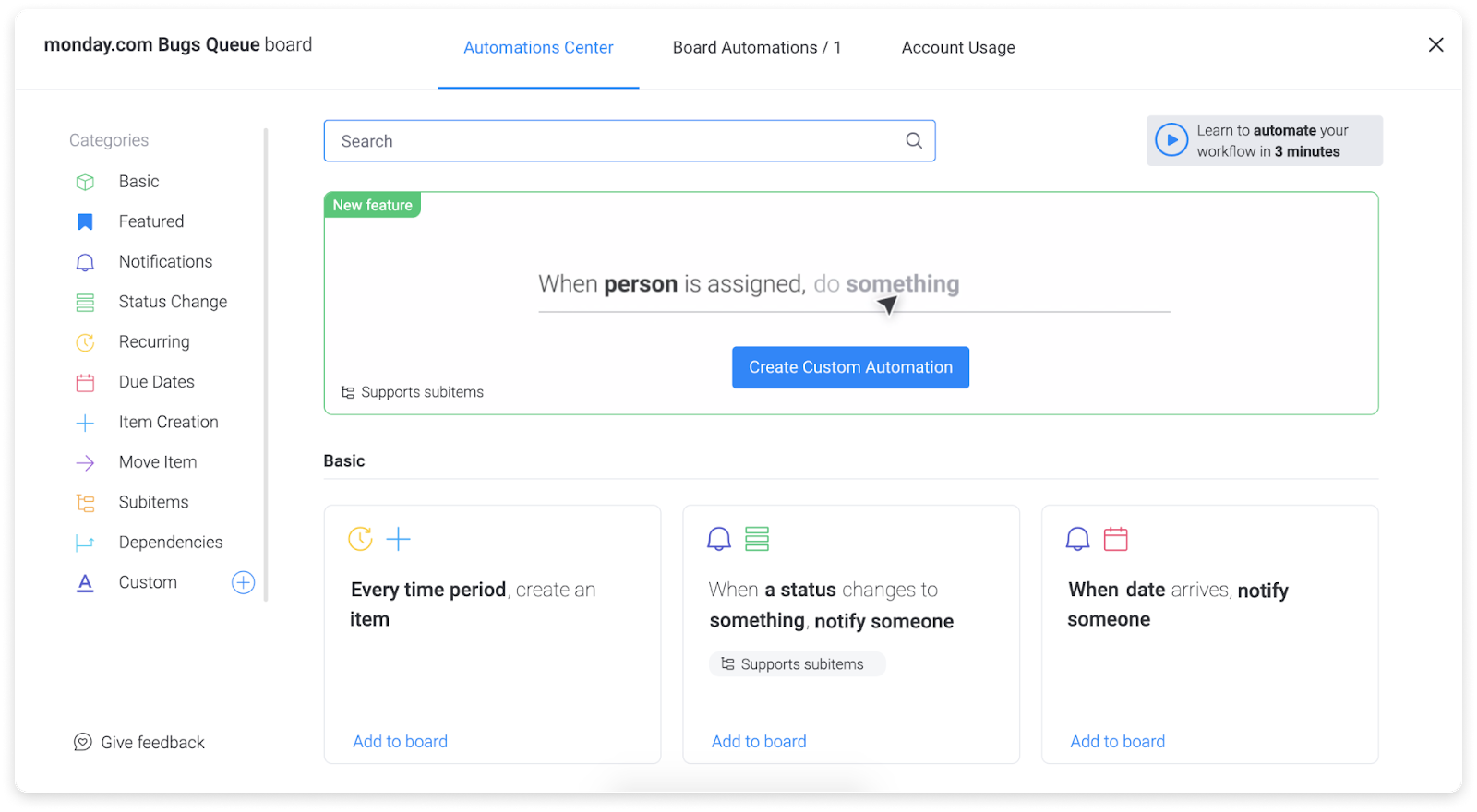
Our automations center gives you the flexibility you need to automate any type of process or operation, regardless of your industry.
For example, you can build an automation recipe so that every time a team member creates a new item, the system automatically tags a specific team member.
Then, you could create an automation on top to automate the status of the activity (e.g. urgent, .high-priority, etc.). This way, your team will be able to better understand the whole picture.
And this is just a small example of everything you can do with our automations.
To learn more about the process, we suggest you watch this short video overview:
A centralized workspace
As we stated a bit earlier, decentralized work is a huge problem for modern organizations. If your team is dispersed, you’ll deal with multiple challenges — like misunderstandings, delays, and inconsistencies in your approach.
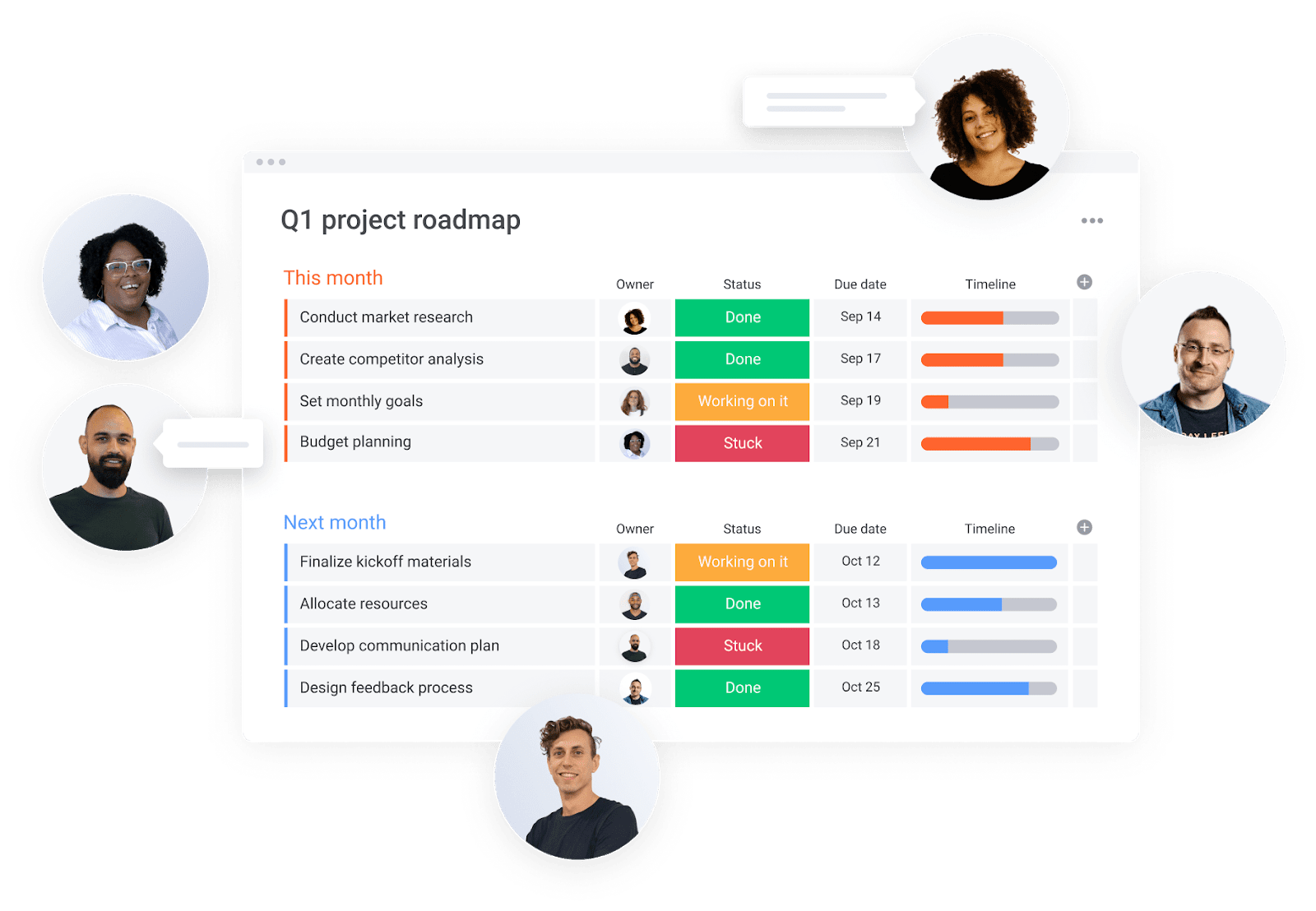
To get rid of this problem, look for a platform that helps you centralize all your work and information into a single place.
With monday.com, for example, you get access to powerful collaboration features, including:
- Tagging: tag team members, clients, and stakeholders with ease.
- Instant-messaging: add context to any important task in real-time and collaborate faster.
- Video conferencing: integrate your favorite video conferencing apps.
- Notifications: notify your team to make sure nothing slips through the cracks.
- File sharing: keep your most important files and documents handy for everyone.
And many more.
This helps you remove silos between departments and speed up organization-wide communication.
Powerful reporting
Let’s imagine that you’re trying to lose some weight.
You start exercising 3 to 5 times per week.
You eat way better.
And start sleeping 8 hours per night.
However, you forget to measure your progress.
How can you know whether your new habits are working?
Well, it would be hard, especially at the beginning.
The same way, if you don’t track your progress, spotting bottlenecks, threats, and opportunities in your organization will be hard, if not impossible.
That’s why you need a system that helps you measure all the information that’s relevant to you. This way, you’ll be able to understand your current levels of productivity, as well as develop ideas to improve them.
For example, monday.com provides you with powerful, and fully customizable, reporting dashboards where you can visualize all your numbers in a very interactive way.

From the start, you get access to more than 20 dashboard widgets that will help you design and build a dashboard that fits your exact needs.
Whether you’re trying to monitor revenue, team performance, time spent, or even expenses, our dashboards will help you make sure nothing slips through the cracks.
A fully-customizable interface
A few years ago, companies used to spend too much time and resources on software or web development. If your team needed a new feature, you’d need to either outsource the project or hire someone to do it.
Both options were time-consuming and expensive.
Nowadays, things are way simpler.
No-code platforms help you build all the apps and features your team needs without any coding skills whatsoever.
With monday.com, for instance, everything is so visual and interactive that you can build a custom workspace in minutes, not days.
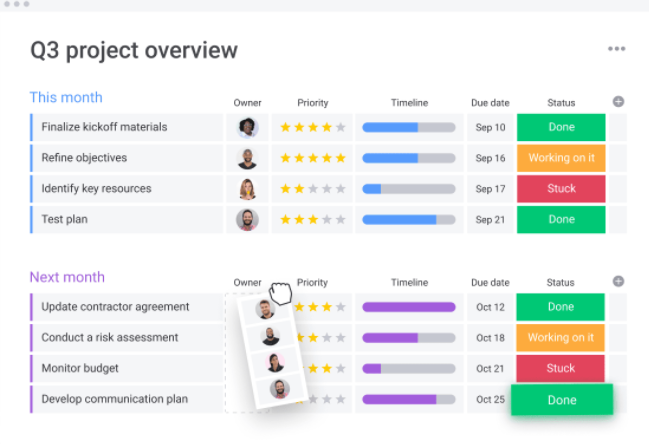
From the start, you get access to:
- Board views: 8 data visualizations, including Kanban, Map, Workload, Gantt, Timeline, and more.
- Dashboard widgets: more than 20 dashboard widgets to improve your reporting.
- Automations: powerful automation recipes to streamline any type of workflow.
- Integrations: seamless integration with 40+ of the most popular tools available.
- Column types: over 40 column types to organize your work the way you want.
And many different building blocks.
The best part?
All these building blocks come in with drag-and-drop functionality so you can move everything at will and design a platform that feels just perfect for your organization.
Templates
Before you choose a specific platform, make sure it offers premade templates for different use cases and industries. That way, you’ll be able to streamline your processes much faster.
For example, with monday.com, you get access to more than 200 templates. These templates are fully customizable and will help you work more productively.
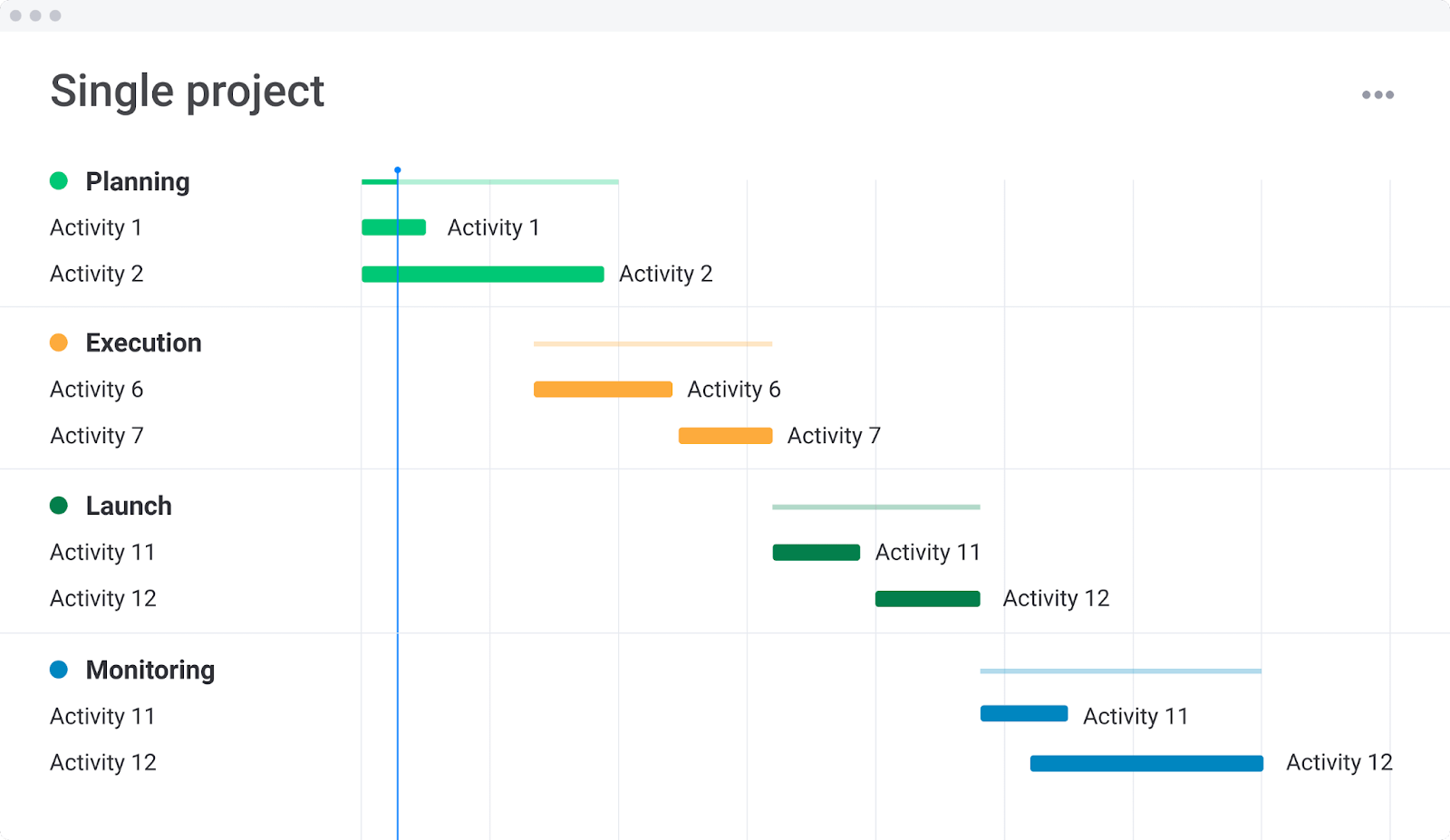
Some of our most popular templates include:
If you’d like to take a look at all of our templates, take a peek at our templates center.
It comes down to doing less, better
Productivity is all about doing more, right?
Wrong.
Productivity isn’t just doing more, but doing more of the right thing. You need to work smarter, not harder.
To achieve hyper-efficiency, you must identify the few activities that really move the needle and focus your energy and resources on those activities.
Also, you should spot potential bottlenecks in your processes and tap into automation to speed up daily tasks.
If you’re looking for a platform that helps you streamline any type of process with ease, then monday.com might be a good fit.
To start, we suggest trying out our fully customizable project management template.

